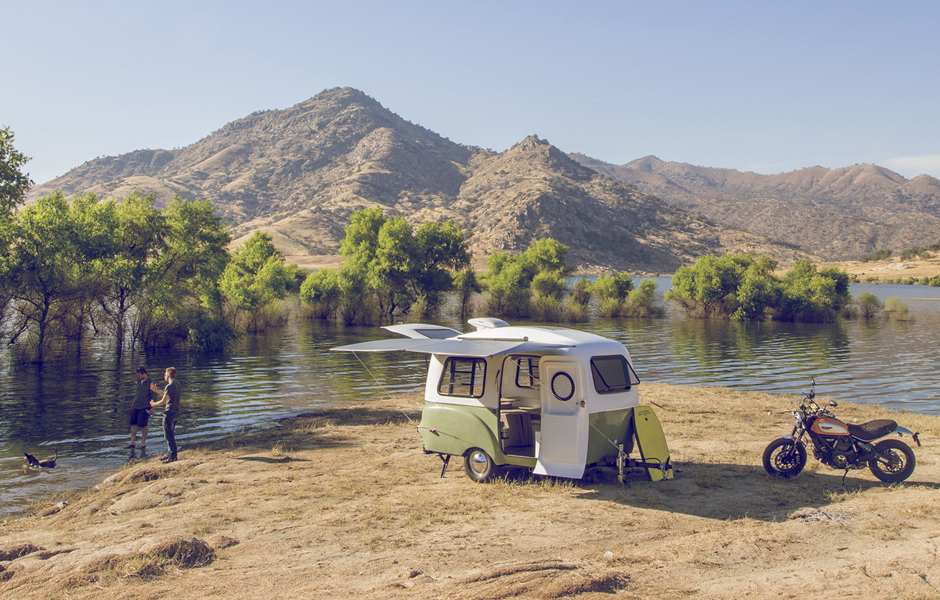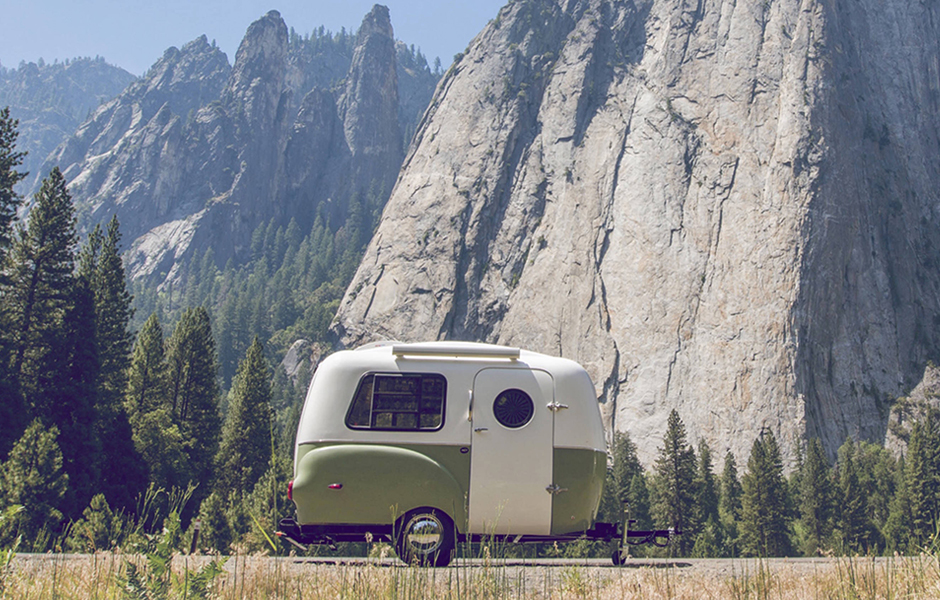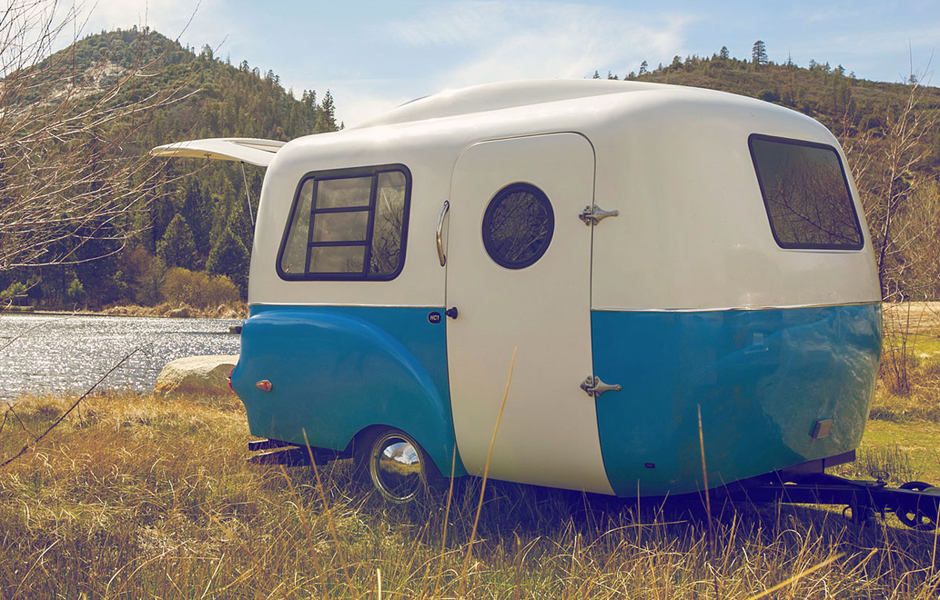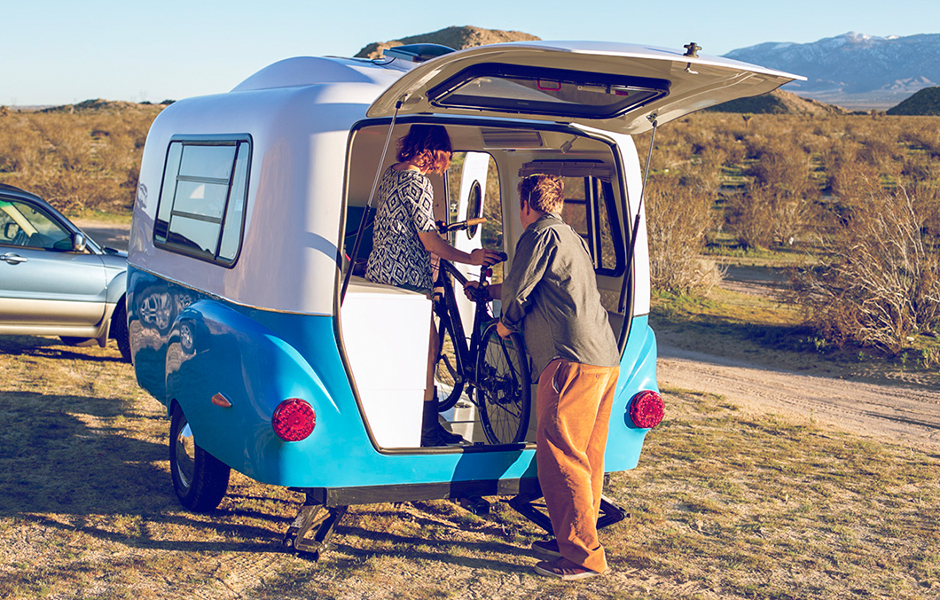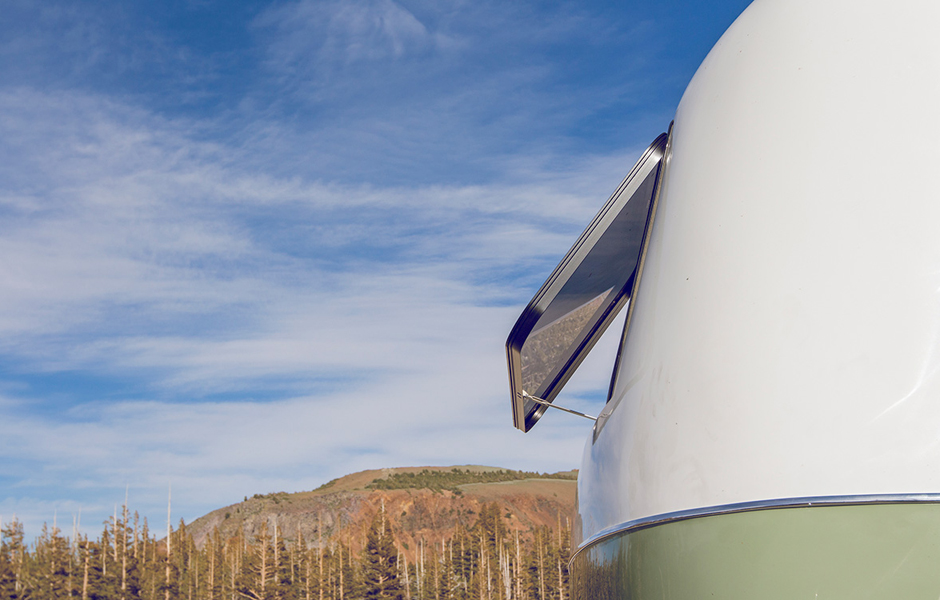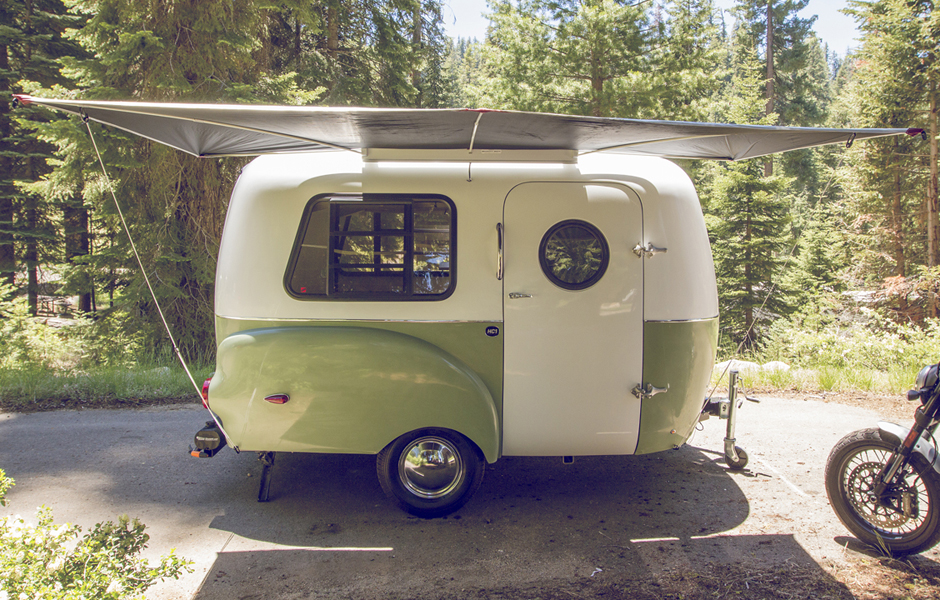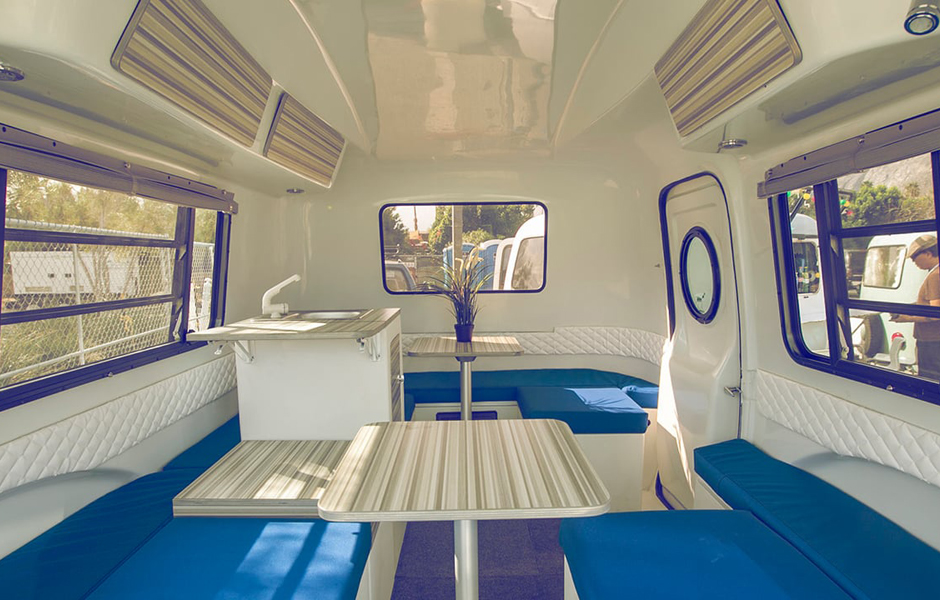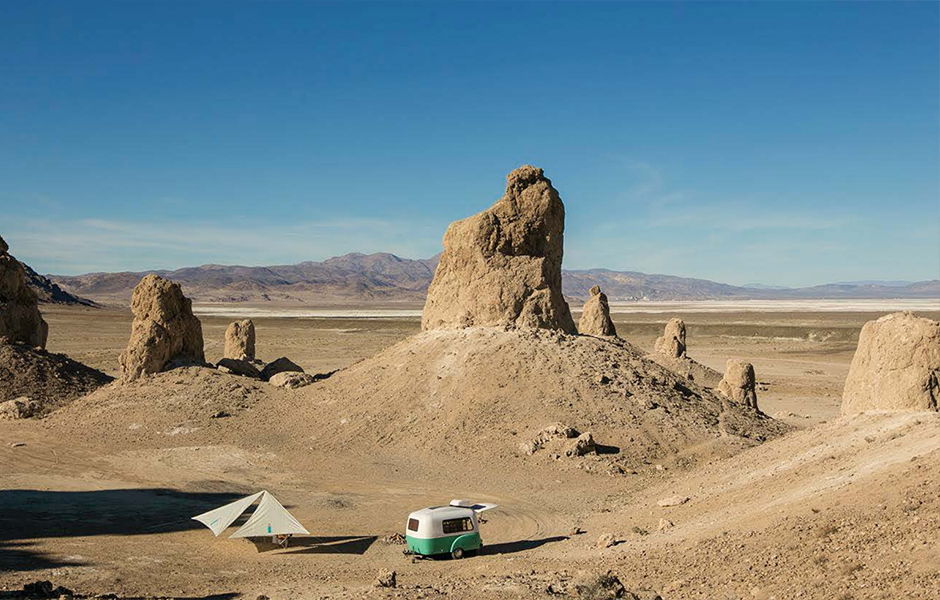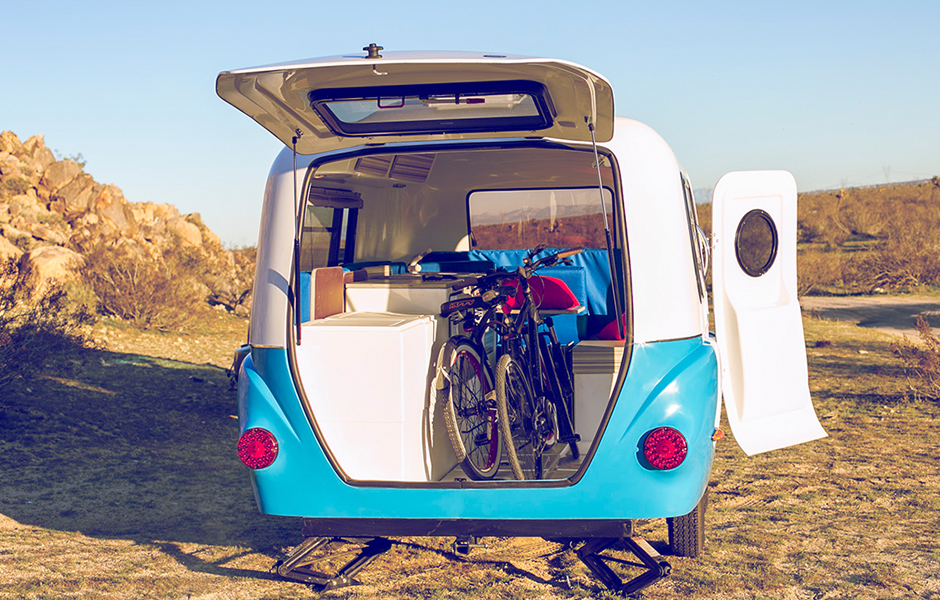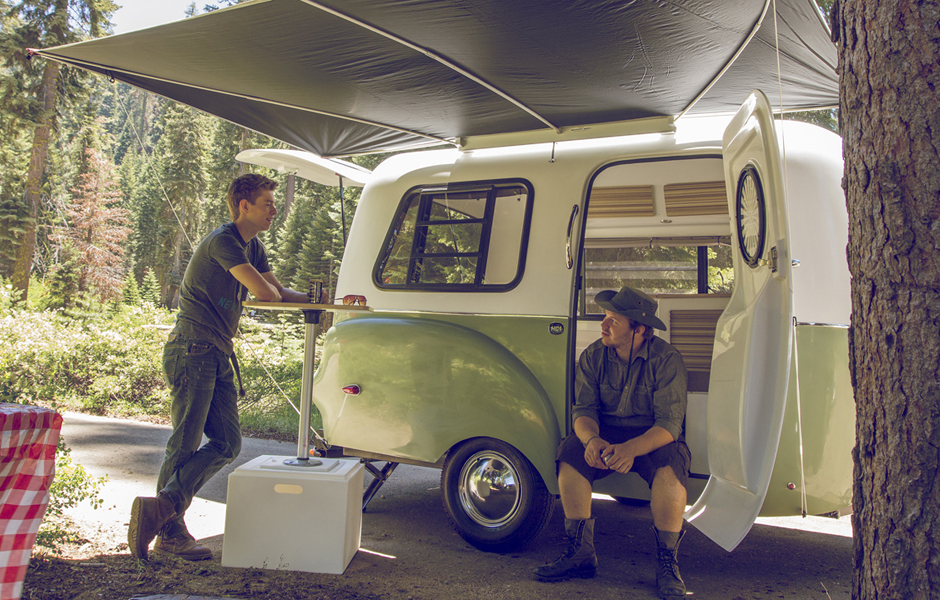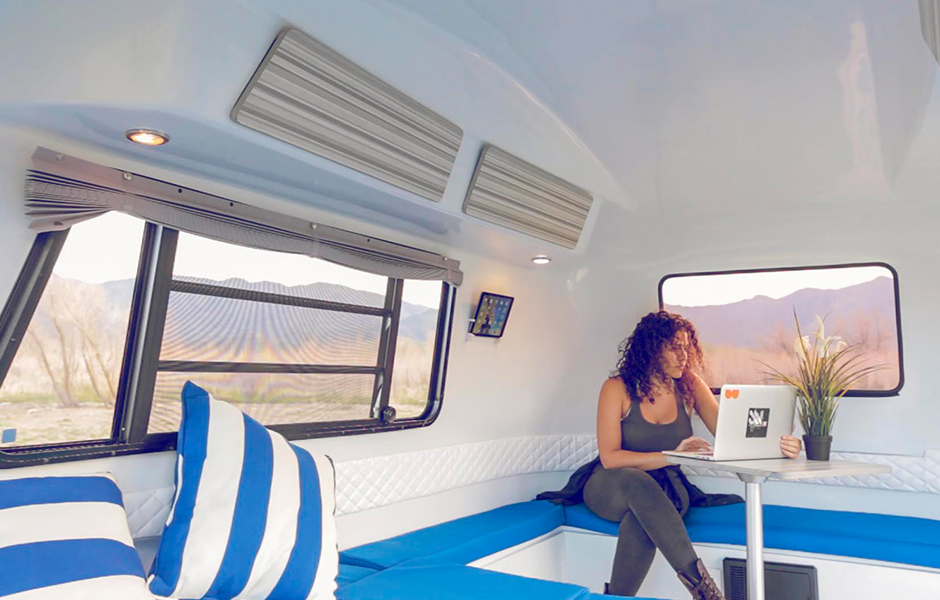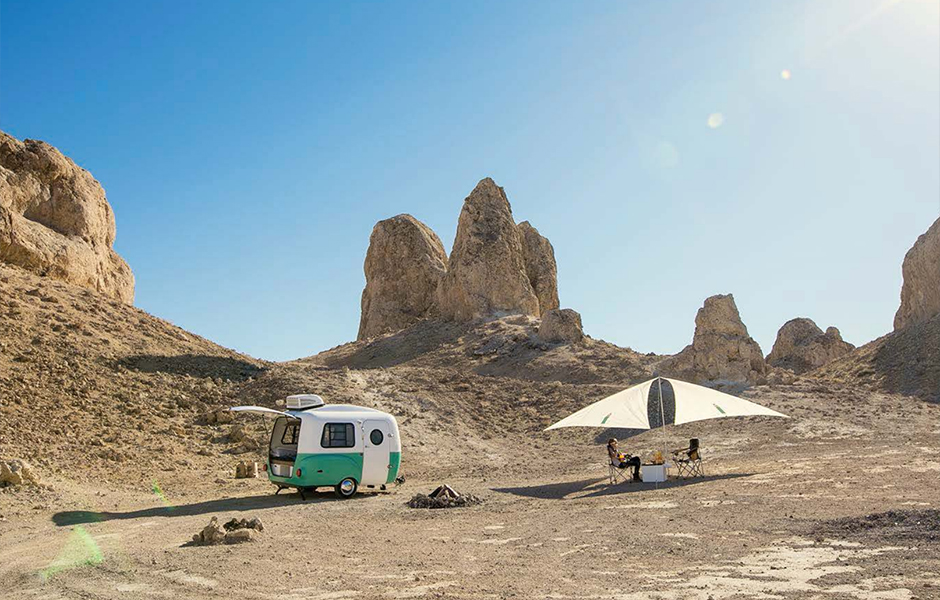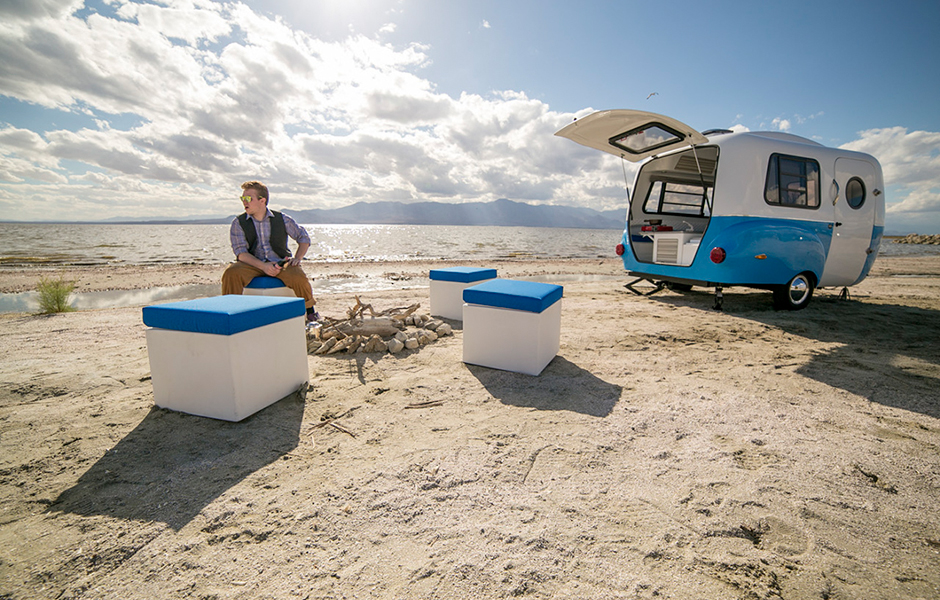Man isn’t meant to stay indoors — our weekly “Trekking” column can attest to that. It’s a column dedicated to the adventurer inside of all of us, the one pining to ditch the office humdrum for a quick surf session or seven-week jaunt in the Grand Tetons. One day we may highlight an ultra-light stove and the next a set of handmade canoe paddles.
If you’re like us, the mere thought of hitting the open road in a dedicated, luxury motorhome isn’t exactly ideal. It’s not so much the idea we balk at — in fact, we believe that traveling in any capacity should be a mainstay of every man, woman, and child — but more so the structure itself. Most motorhomes are big and bulky, filled to the brim with unnecessary amenities that are more than just a step up from a traditional tent setup. That said, the right trailer is a different story.
In a way, the Happier Camper HC1 ($15,950+) cuts corners, but it does so in all the right ways. Showcasing an attractive build that meshes a modern design with classic retro flair, the towable camper capitalizes on five years of trial and error. It’s made of honeycomb fiberglass and weighs a mere 1,100 pounds — meaning most vehicles can tow it — yet, it’s modular design allows for the utmost functionality. You can customize and alter the interior layout in minutes, allowing you to transform the space from a five-person sleeping quarters to mini toy hauler in a matter of minutes, complete with a kitchenette, dining table, and storage. The modular cubes can moonlight as rugged outdoor furniture if need be, providing you with ample room inside and out.
However, there’s more to the HC1 than what initially meets the eye. A host of optional add-ons further fuel what’s possible, whether you want to adorn the 42 square feet of space with a surround sound system, a tablet docking station, or any other compatible accessory available through Happier Camper. Welcome features such as an enormous rear hatch and classic fenders also come standard, along with the panoramic windows and various wood-top components (countertops, doors, lids, etc.). The five color options round out the appeal, rendering it one of the closest incarnations of the classic Volkswagen van since — well — the classic Volkswagen van.
Check out the Happier Camper HC1 online for more information, to make a purchase, or to peruse rental opportunities in your area. Prices start at $125.
